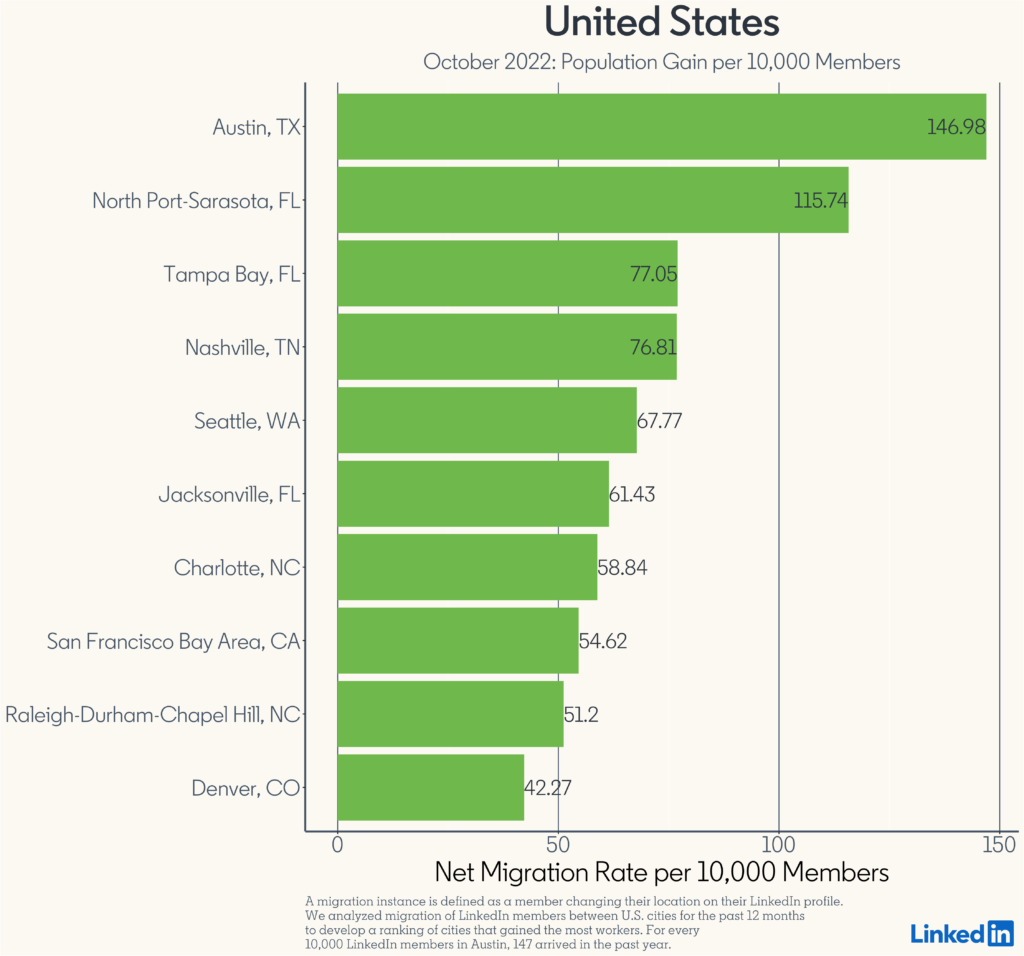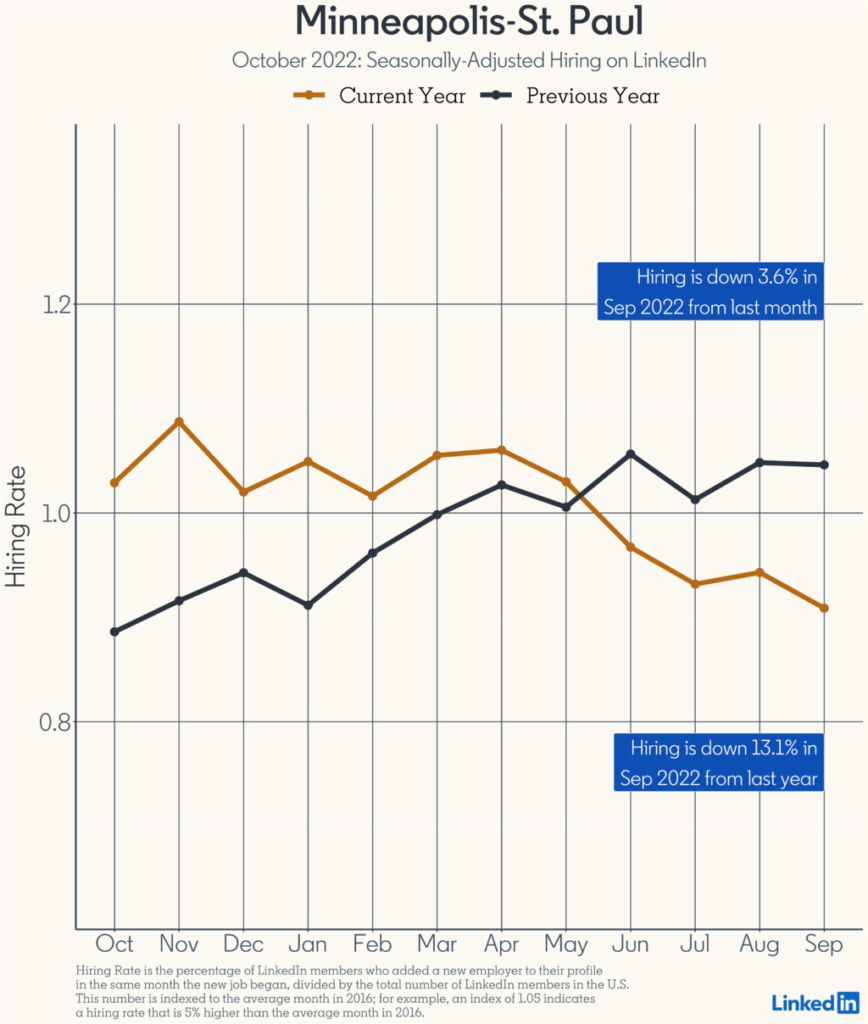LinkedIn data show the Twin Cities losing workers
Nowadays, private companies like Zillow produce data which can help inform policymakers as much as data produced by more traditional, mostly government, sources. LinkedIn is an example. The social network for professionals plays an increasing role in recruitment and this allow it to produce data which can illustrate labor market trends.
LinkedIn’s most recent Workforce Report, for example, finds that “September hiring losses reverse August hiring gains,” “Hiring is Down Across a Majority of Industries,” and “Hiring Down Across All Twenty Metros.” This is a less rosy picture than that painted by some official numbers.
In terms of migration, LinkedIn’s data show that
The U.S. cities losing the most people are State College-DuBois, PA; College Station-Bryan, TX; and Lafayette, IN. For every 10,000 LinkedIn members in State College-DuBois, PA, 248 left in the past 12 months.

The U.S. cities gaining the most people are Austin, TX; North Port-Sarasota, FL; and Tampa Bay, FL. For every 10,000 LinkedIn members in Austin, TX, 147 arrived in the last 12 months.

That six of the ten metros seeing the biggest inflows are in states with no income tax will surprise nobody who has followed our work (three of ten metros with the biggest outflows are also in states without an income tax).
What does the data tell us about the Twin Cities metro?
The Twin Cities labor market seems to be slowing, LinkedIn reports:
Hiring was 3.6% lower in September 2022 compared to last month August 2022 and was 13.1% lower in September 2022 compared to last year September 2021…

In terms of immigration, LinkedIn reports:
Minneapolis-St. Paul gained the most workers in the last 12 months from Eau Claire-Menomonie, WI; Duluth, MN; and Fargo-Moorhead, ND. So for every 10,000 LinkedIn members in Minneapolis-St. Paul, 1.51 workers moved to the city in the last year from Eau Claire-Menomonie, WI.
The only one of the top ten sources of migrants to the Twin Cities not in a neighboring state is Detroit.

Looking at emigration, LinkedIn reports:
Dallas-Fort Worth, TX; Los Angeles, CA; and Phoenix, AZ gained the most workers from Minneapolis-St. Paul in the last 12 months. So for every 10,000 LinkedIn members in Minneapolis-St. Paul, 2.34 workers moved to Dallas-Fort Worth, TX in the last year.
Not one of the top ten destinations for emigrants from the Twin Cities is in a neighboring state. Four of the ten are in states with no income tax.

These numbers tell us two things. First, the Twin Cities are losing workers. Second, while people are willing to move here from nearby, they are willing to move much further to get away. Whether we like it or not, Minnesota is in competition with all fifty states, not just our neighbors.